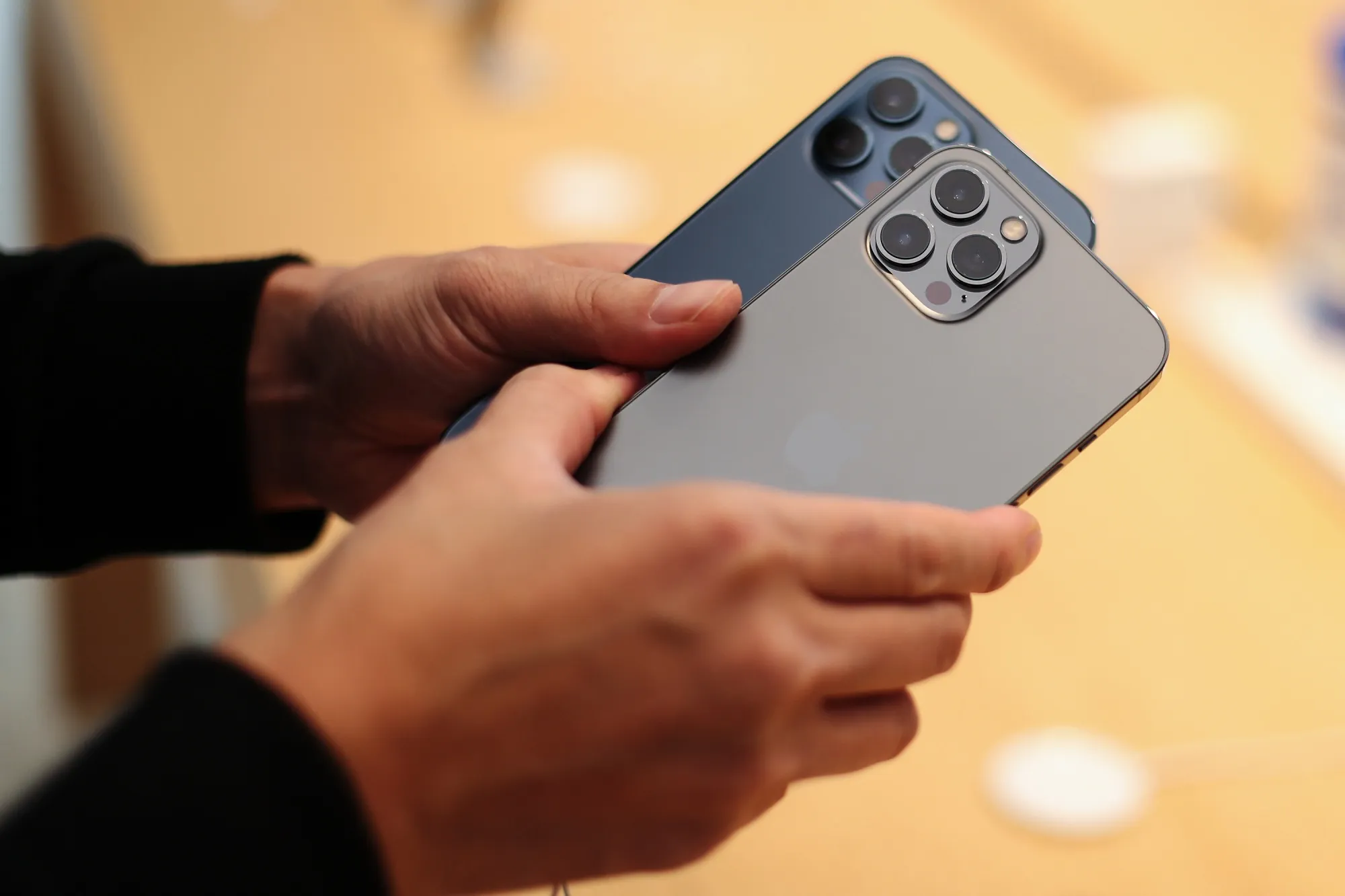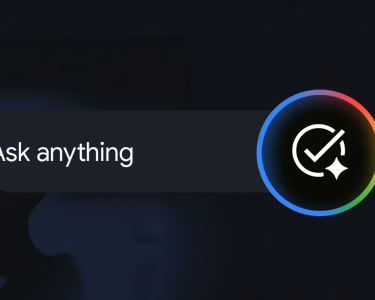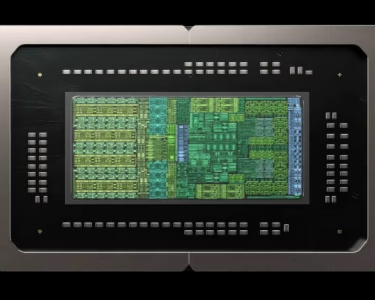Apple is weeks away from its big product launch event, where it will lay the foundation for a once-in-a-generation iPhone overhaul. Also: The company talks with Google about using Gemini to power Siri, and it raises the price of TV+. Lastly, Apple loses yet another AI executive to Meta.
Last week in Power On: Apple’s Vision Pro is suffering from a lack of immersive video.
Programming note: Power On will be back Sept. 7.
The Starters
There’s no denying that the pace of iPhone design innovation has slowed dramatically in recent years. Sure, the chips and camera sensors are better, and the iOS interface has been overhauled. But the look of the phone itself — the thing that once inspired people to wait in line for the latest model — has lost its wow factor.
When consumers buy new iPhones today, it’s often because they have a cracked screen or worn-out battery, or they want to take better pictures and videos. Maybe they’re just glued to the Apple Inc. ecosystem and upgrading by habit. They’re not buying new models because their current iPhone looks old.
That’s all about to change. For the first time ever, Apple is planning three straight years of major iPhone redesigns. After playing it safe for a long time, the company is planning to reinvigorate its flagship phone — even as others in the industry pivot toward more AI-centric products.
It all starts in September with the iPhone Air — a skinny new model that will replace the iPhone 16 Plus. This product follows the MacBook Air laptop strategy that Apple first embraced in 2008: thinner, lighter and instantly marketable.
Like Air computers over the years, there will be compromises: Battery life will be subpar, with only one rear camera and no room for a physical SIM-card slot. The iPhone Air also will use Apple’s first in-house modem chip — rather than more powerful versions from Qualcomm Inc.
Alongside the new Air, we’ll get the iPhone 17, 17 Pro and 17 Pro Max. These will look familiar — basically the iPhone 16 in slightly different clothes. The Pro models will have a revamped camera system and updated industrial design on the back of the phone. The Pro models also will be available in an orange color (the Air, meanwhile, will come in light blue). But don’t expect eye-catching changes.
The Pro models have been strong performers for Apple, and I don’t expect that to change this year — even with the modest update and price hikes due to tariffs. Some people will opt for the slimmer model instead, but the Pro versions are probably more practical for most consumers. In any case, Apple deserves credit for trying something entirely new with the Air. And that model’s engineering and components will set the stage for future innovation.
The game changer arrives in 2026: Apple’s first foldable iPhone. Code-named V68, it looks like Samsung Electronics Co.’s book-style foldables that open into a small tablet. It’s slated to feature four cameras (one on the front, one on the inside and two on the back) and — like the iPhone Air — will lack a SIM-card slot. It also will use Touch ID instead of Face ID, making it a bit of a throwback in that respect. But I still think it will be hugely popular with Apple’s legion of consumers who are willing to spend whatever to get the latest and greatest.
Apple’s suppliers are already working on the new model and plan to ramp up production early next year for a fall release — and I’m thrilled. I’ve been clamoring for a foldable iPhone for years, and Samsung has proven how valuable the category is for power users and video watchers. I think once people try foldables, they’ll never want to go back.
Though Apple’s plans could evolve, the company is currently only testing variations of black and white for the folding phone with suppliers. The device will also include the C2 modem, which will be the company’s first cellular chip with capabilities approaching the latest from Qualcomm. (The iPhone 18 Pro line, which won’t look much different than the 17 Pro, also will use this modem chip.)
Apple recently made a change to the screen technology in its foldable iPhone. The original plan was to rely on what are known as on-cell touch sensors, a different approach than current iPhones use. But they can create air gaps between the screen and its cover — and make the unfolded display’s crease look more pronounced. I’m told that Apple is now pivoting to an in-cell touch screen, something closer to what’s already in the iPhone. That should help make the crease less obvious and improve touch accuracy.
Then comes 2027, when Apple celebrates its smartphone’s 20th birthday with a curved-glass “iPhone 20.” This design will finally break from the squared-off slab we’ve lived with since 2020 and move to an approach with curved glass edges all around. It should fit nicely with the new Liquid Glass-based interface for iOS and other operating systems due to be released next month.
The bottom line: 2025 won’t be a revolutionary year for the iPhone. But it will lay the foundation for major shifts in 2026 and 2027, making it an exciting time for iPhone fans.

As for Apple’s other devices, there’s a lot in the fall pipeline — though many of the new products are only incremental upgrades.
There will be Apple Watch updates, faster Vision Pro headsets and iPad Pros with the M5 processor. You should also expect new AirPods Pro earbuds (I reported earlier this year that Apple is working on a pair with heart-rate monitoring), as well as HomePod minis and Apple TV set-top boxes.
Heading into next year, Apple is preparing an iPhone 17e, new low-end iPads and updated iPad Airs, in addition to M5 MacBook Pros and MacBook Airs. There are also major Mac accessories in the works, including a fresh external display.
And we should even see a new product category: the very-much delayed HomePod with a screen. That will finally thrust Apple into competition with Amazon.com Inc. and Alphabet Inc.’s Google for smart home customers. The product will be accompanied by a new home-centric operating system dubbed Charismatic.
Looking even further down the road, products in development include display-less smart glasses, a tabletop robot, a cheaper and lighter headset, AirPods with cameras, a giant foldable iPad and Mac convertible device, and a home security camera system.
But make no mistake, the centerpiece of everything at Apple is the iPhone. And the upgrade plan signals that its place at the heart of the company’s lineup is secure.
The Bench

Apple to drum up additional revenue with paid Health+ service, TV+ price hike and AppleCare One. Apple’s services segment has been its fastest-growing and most-profitable area for a while. Offerings like the App Store, AppleCare and Apple Music have helped turn the category into a roughly $100 billion-a-year business — the company’s biggest moneymaker outside the iPhone.
But there are some real headwinds coming: Government regulators are reining in the App Store, and the most lucrative aspect of the marketplace — in-app purchases — is getting hobbled in the US. Then there’s the search engine deal with Google, which may get ripped up by a judge. It generates roughly $20 billion a year for Apple. Altogether, nearly 40% of services revenue could be at risk.
Of course, Apple will figure out some solutions, like changing its App Store fees to keep developers from going to outside payment methods. It also will likely come up with a replacement — or multiple replacements — for the search deal.
The company is taking other steps to keep its services growth chugging along:
- In July, it rolled out AppleCare One, a $20-per-month plan that protects three devices. This should be like printing money for Apple: The people who purchase this kind of plan probably buy new devices annually anyway and will hardly use it. They’re happy to pay Apple an extra $240 a year for little to nothing.
- Then, this past week, the company raised the price of Apple TV+ from $9.99 to $12.99. The streaming service is still cheaper than ad-free plans from Netflix, Hulu and others, but the price remains a stretch for what the company is offering. I understand Apple has added a lot of new content — even some hits — but let’s not pretend it has a Netflix-sized catalog of shows.
As more services revenue potentially gets eaten away, expect Apple to continue launching additional offerings and raising prices to make up the difference. As for wholly new services, look out for a paid Apple Health+ option to debut next year. As I’ve detailed several times, this is an AI-based health coach with nutrition planning and medical suggestions.

Apple asks Gemini to train an AI model as it considers outside partners to help power Siri. The Siri voice assistant is at a crossroads, with two possible paths under consideration. The company could continue powering the service with its own in-house Apple Foundation Models or pivot to using models from an outside provider.
If Apple opts for the third-party option, it also has to choose the partner. The company has discussed deals with three different providers: Google, Anthropic PBC and OpenAI.
Discussions with Anthropic have been fairly extensive, and Apple is already using that company’s technology in its internal tools and even some consumer features. Apple software engineers do a lot of coding on a custom version of Xcode that uses Anthropic’s Claude. A new version of Xcode for third-party developers allows Claude to be plugged in, and I expect even more Claude integrations down the road.
But don’t count out Google. A few weeks ago, Apple approached the search giant about making a version of its Gemini AI models that could run on its Private Cloud Compute servers and power Siri. Google is training and developing that model right now with Apple’s help, I reported on Friday. It’s unclear where exactly Apple will land on this issue, but it’s obvious that management is seriously contemplating the external route.
This hasn’t been discussed between the two companies, but I’d imagine that if Apple and Google come to an agreement, it would be the basis of a new arrangement around search as well. Don’t forget that Apple’s search deal with Google could be thrown out by a US judge in the coming weeks. Also, to be clear, these partnership discussions are unrelated to efforts to integrate OpenAI’s ChatGPT and Gemini into Siri to help handle general knowledge queries.
Roster Changes

Apple loses its sixth AI employee in two months (you read that right) to Meta’s new lab. This past week, Apple lost another key member of its artificial intelligence team: Frank Chu, a director in the group’s infrastructure organization. Chu has been a top deputy to the head of all AI infrastructure and helped lead work to both train and run Apple’s in-house models on the company’s servers. He was also heavily involved in search engine efforts for its apps and services.
Chu is the second-biggest name at Apple to leave for Meta Platforms Inc. over the past two months. Ruoming Pang, who built and led Apple’s models team, is still the most significant exit. Altogether, at least six Apple AI engineers and executives have bolted for Meta in a roughly eight-week period. Losing six people to a company’s competing team in one year would be a lot. Having that happen in a matter of weeks is just a different level.
As for why this is happening: It’s a combination of Apple’s well-documented struggles in the space, the company seriously contemplating using third-party models to power Siri, and the unprecedented pay packages being offered by Meta.





